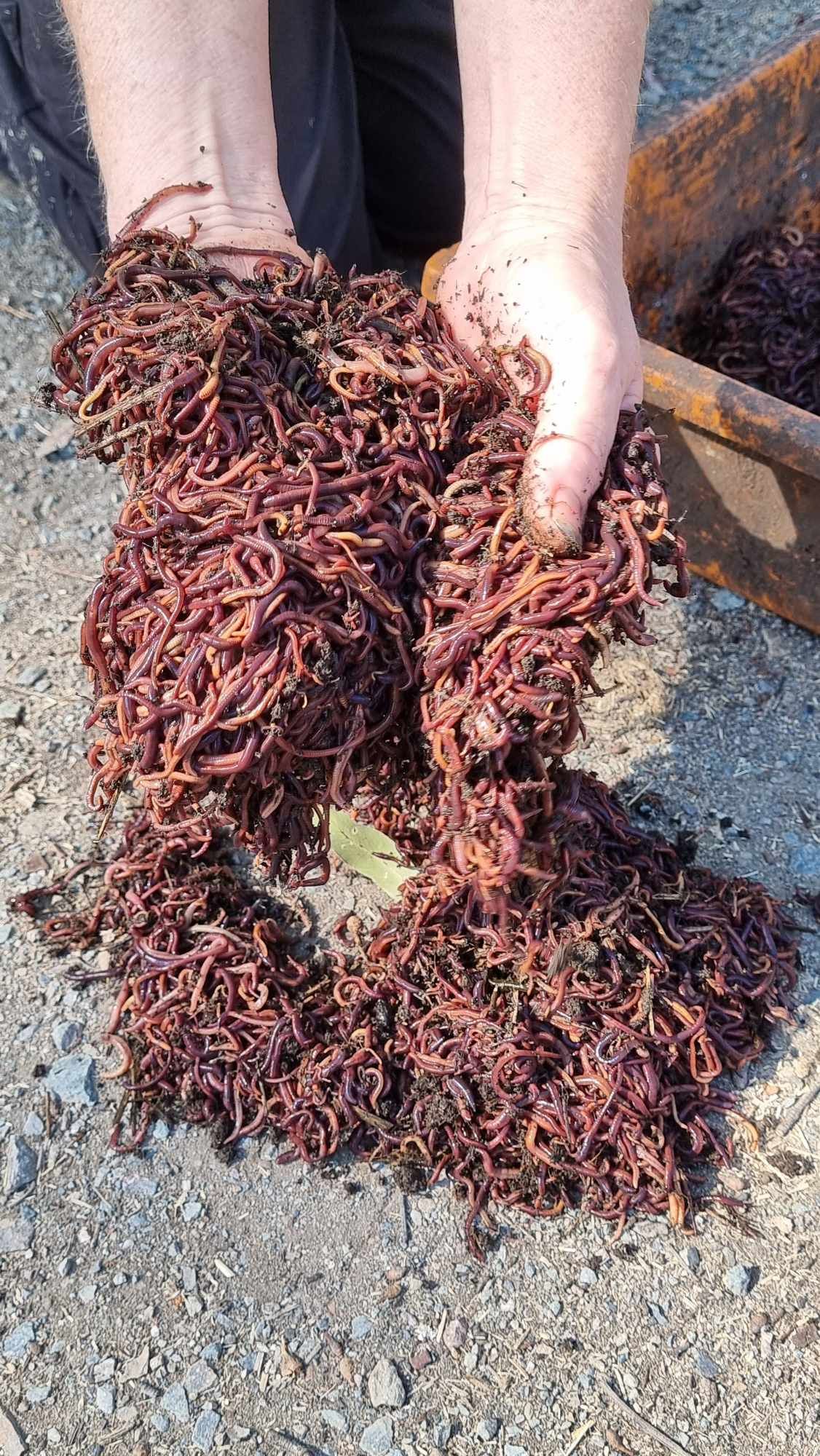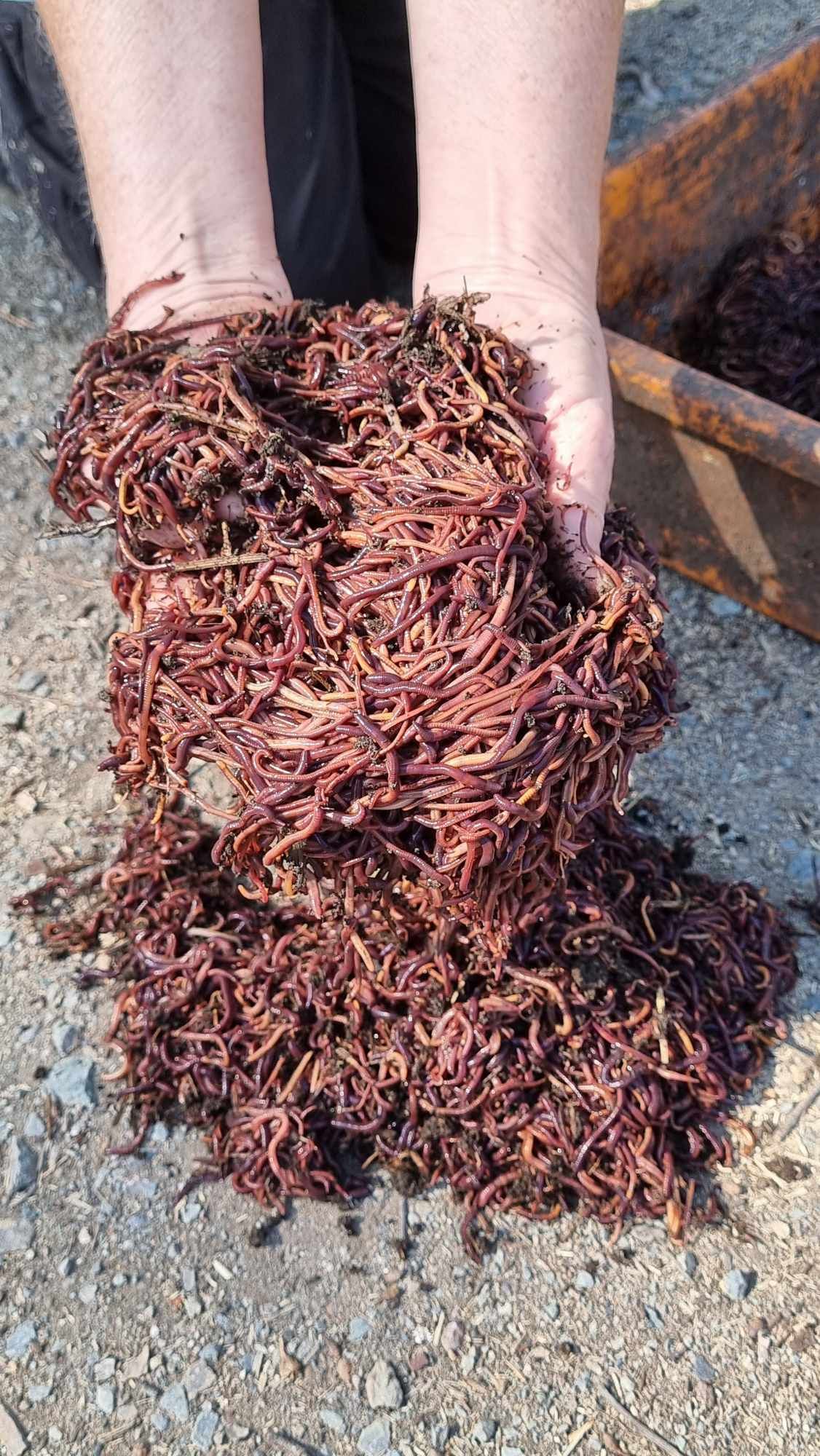You can receive a complimentary copy of our Composting guide sheet when you buy our 2000 or 4000 compost worms, or you have the option to download the digital version for just $5.⬇️


(Shipping Days Monday and Tuesday)
Compost Worm
The Power of a Mixed Worm Farm: Reds, African Nightcrawlers & European Nightcrawlers
If you want a thriving, efficient compost system, choosing the right worms is key. That’s why our compost worm mix is specially blended to include Red Wigglers, African Nightcrawlers, and European Nightcrawlers — each selected for their unique strengths in breaking down organic waste.
Why Use a Mixed Worm Blend?
Different worms perform slightly different roles in your compost bin or worm farm. By using a mix of species, you:
✅Get faster and more complete composting
✅Create better-structured worm castings
✅Build a worm population that is more resilient to environmental changes
✅Process a wider range of waste materials
Meet the Stars of Our Compost Worm Mix
🪱 Red Wigglers (Eisenia Fetida)
Red Wigglers are the workhorses of composting. They thrive in the upper layers of your bin where they quickly consume food scraps and organic matter. They are:
✅Extremely hardy
✅Fast breeders
✅Great at breaking down kitchen waste
🪱 African Nightcrawlers (Eudrilus Eugeniae)
Known for their larger size and incredible composting ability, African Nightcrawlers:
✅Produce exceptionally rich worm castings
✅Help aerate and structure the compost
✅Work well in warmer climates (perfect for many Australian regions)
🪱 European Nightcrawlers (Eisenia Hortensis)
Also called Super Reds, European Nightcrawlers:
✅Are excellent burrowers, helping to aerate the bin
✅Thrive in a range of temperatures, making your worm population more resilient
✅Are great for both composting and fishing bait!
Why Our Mix Works So Well
✅ Layered composting: Reds work in the top layers; Nightcrawlers burrow deeper, improving oxygen flow.
✅ All-temperature performance: Combining species gives better results across seasonal changes.
✅ High-quality castings: Each species contributes to the production of nutrient-rich worm castings.
✅ Robust worm population: Diversity ensures your bin stays healthy and active.
Perfect for All Composting Setups such as
✅Compostable toilets
✅Composting Tumblers
✅Structured compost set ups in the backyard
✅Inground compost bins
✅Kitchen compost bins
✅Large-scale composting systems
✅Garden soil improvement
Final Thoughts
By blending Red Wigglers, African Nightcrawlers, and European Nightcrawlers, we give you a powerful composting solution that is fast, reliable, and highly productive. Whether you’re just starting out or looking to supercharge your existing worm farm, this mix will help you turn food scraps and organic waste into beautiful, rich worm castings — perfect for your garden.
Compost Worms FAQ 🪱
What Kind of Worms Do You Put in Compost? 🪱
The most common type of worm used for composting is the red wiggler or red worm, also known as "composting worms." They are well suited for composting because they can quickly consume a large amount of organic matter and can tolerate a wide range of temperatures and moisture levels. They are also highly effective at decomposing and converting organic matter into nutrient-rich compost. Other worms, such as nightcrawlers, could also be used.
How Long Do Compost Worms Live?🪱
The lifespan of a composting worm can vary depending on its living conditions and the species of worm, but most composting worms live for around 1-2 years.
Red wigglers can live for up to two years and breed quickly in ideal conditions. Composting worms can reach maturity and begin breeding within 60-90 days of hatching under ideal temperature, moisture, and food conditions. They can lay 1-2 cocoons per week, each with 2-20 eggs. This means that a small worm population can quickly grow to a large population, allowing for continuous composting and nutrient production and making them ideal for your worm farm.
Is It OK to Put Worms in a Compost Bin? 🪱
Yes! When you add composting worms to a compost bin, they consume the organic matter and convert it into nutrient-rich compost.
When adding worms to a compost bin, you must provide them with the proper conditions, such as a balance of moisture, temperature, and food. A compost bin should not be too wet or too dry, and the temperature should be between 55 and 70 degrees Fahrenheit for red wigglers. You should also mix the compost on a regular basis to ensure that the worms have access to fresh food and oxygen.
We suggest starting with a small number of worms and gradually increasing the population as it grows. This will allow the worms to adjust to their new environment and avoid overcrowding the compost bin.
Can You Put Composting Worms in the Garden? 🪱
Yes, composting worms can be added to a garden to help improve soil health and fertility. This is also known as vermiculture or vermicomposting. Worms can be directly added to the soil or placed in a worm bin near the garden. Compost worms break down organic matter in the soil, such as fallen leaves, grass clippings, and kitchen scraps, and convert it into nutrient-rich compost.
This compost can then be used to boost the soil and supply nutrients to plants. Worm castings, which are worm excrement, can also be collected and used as a soil amendment to improve soil structure and fertility.







